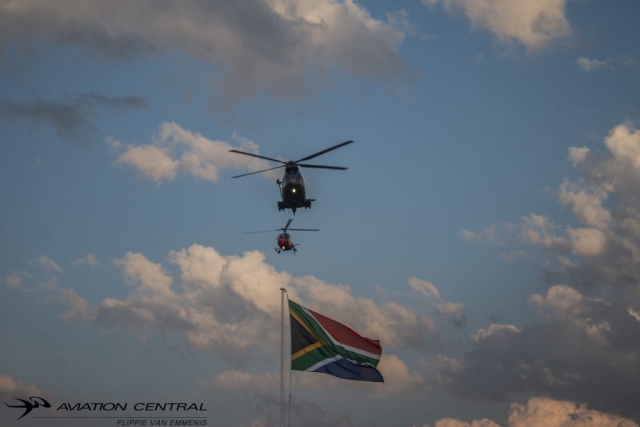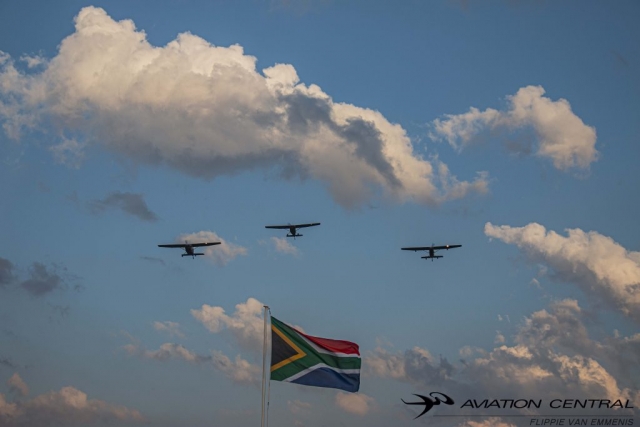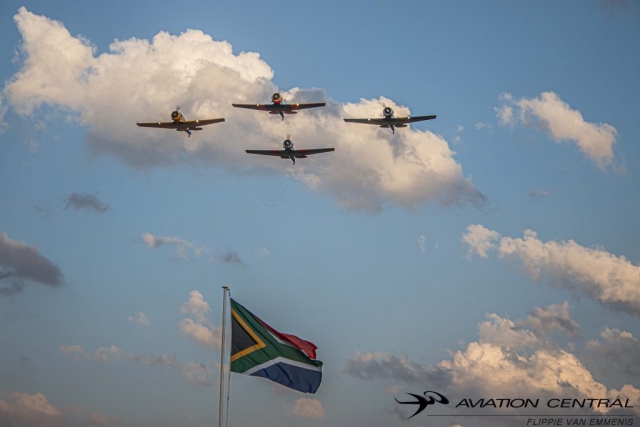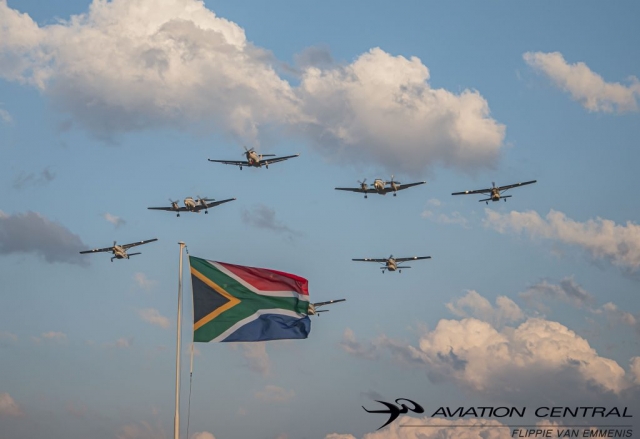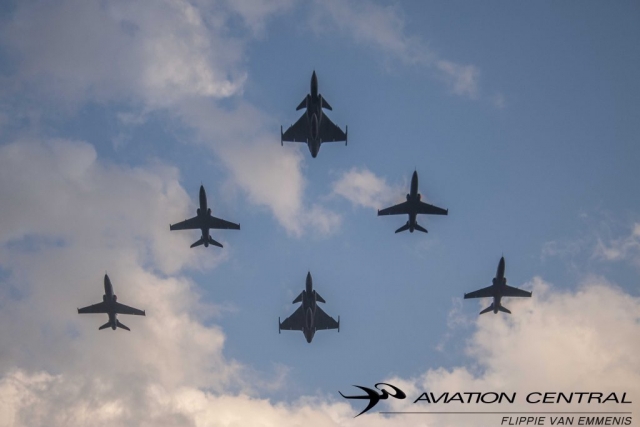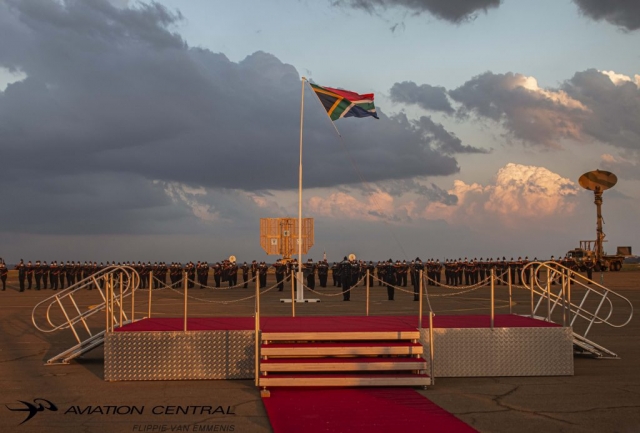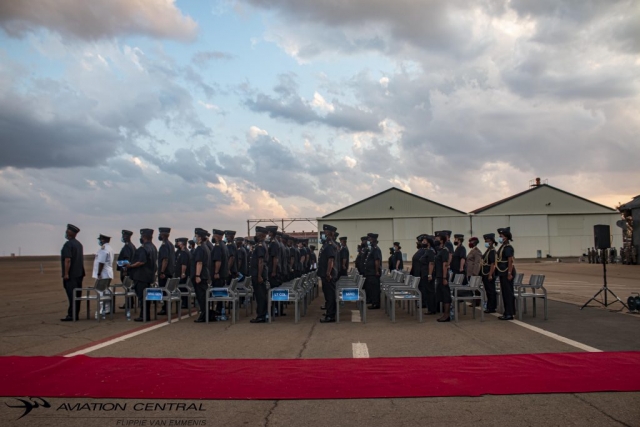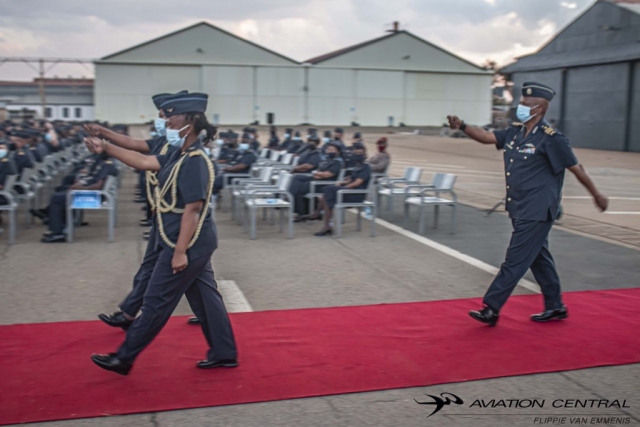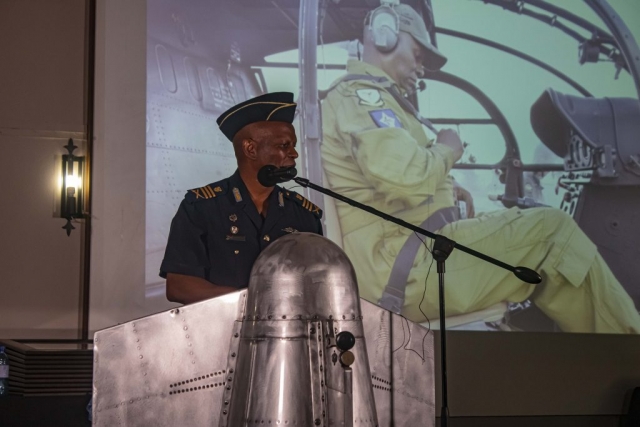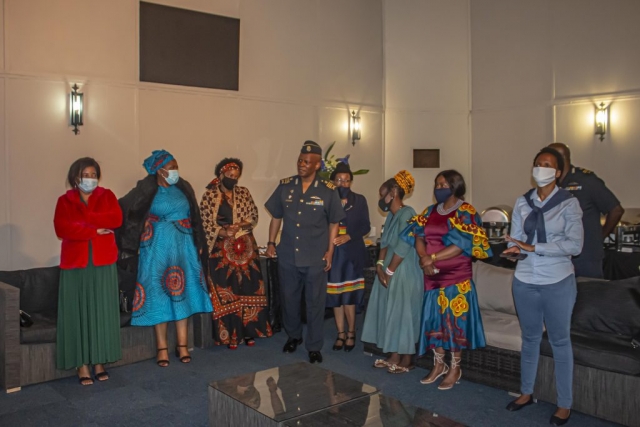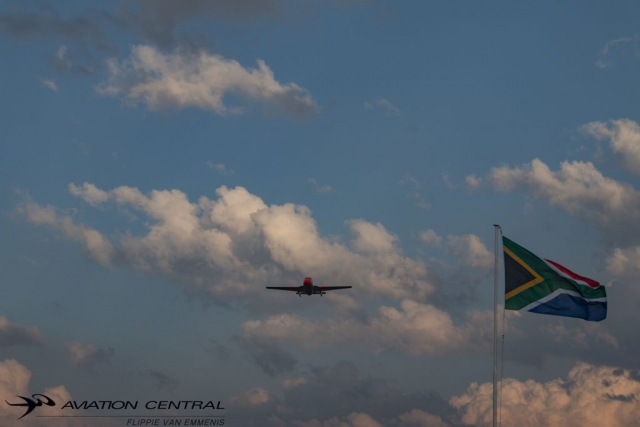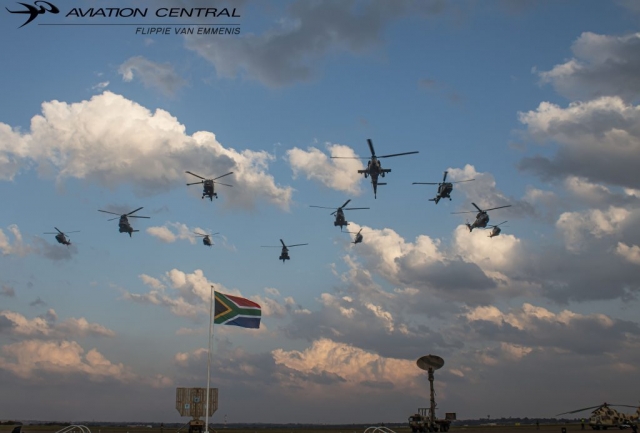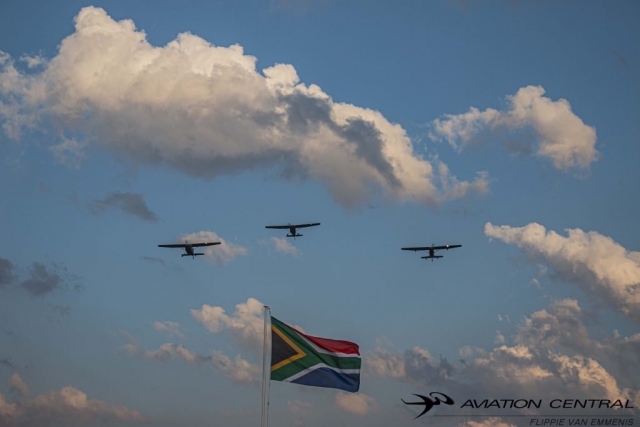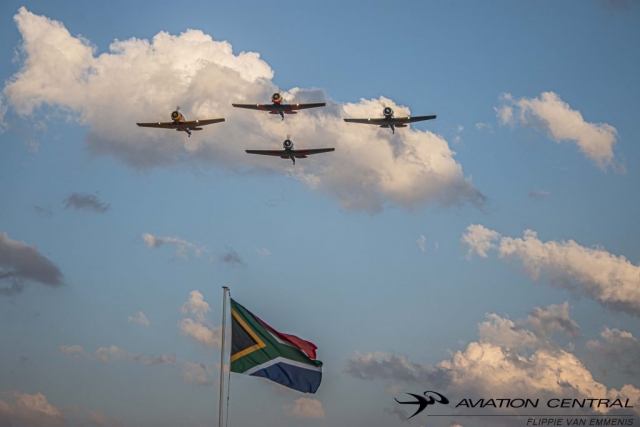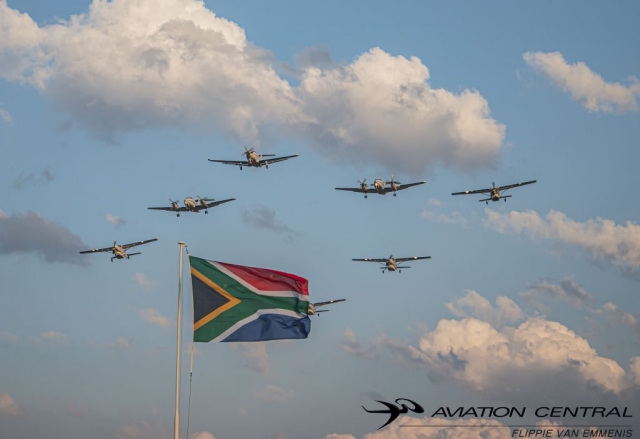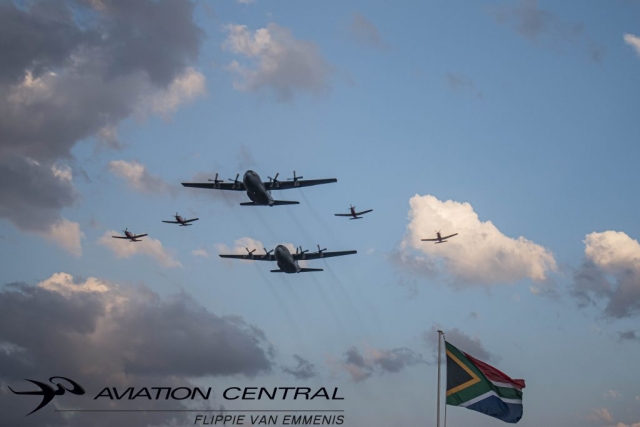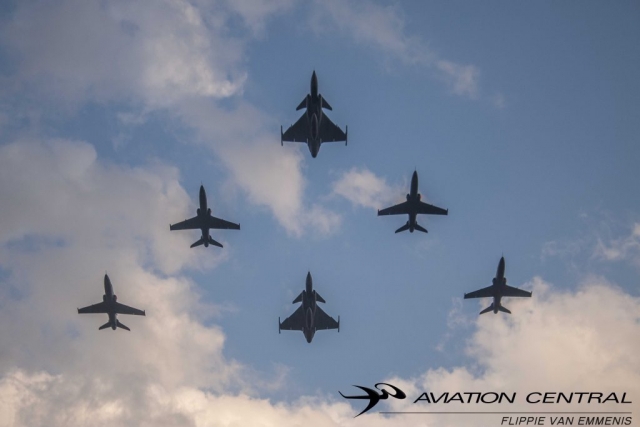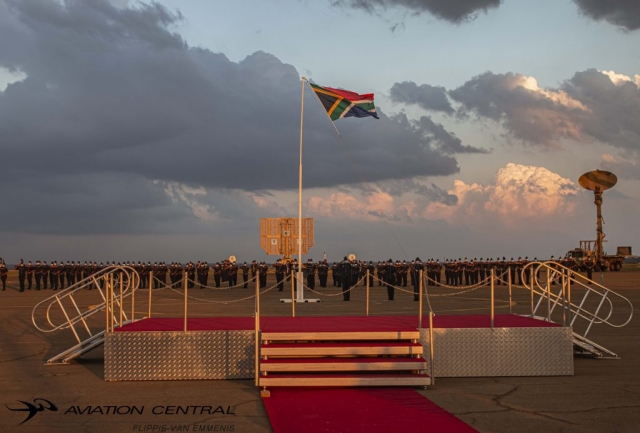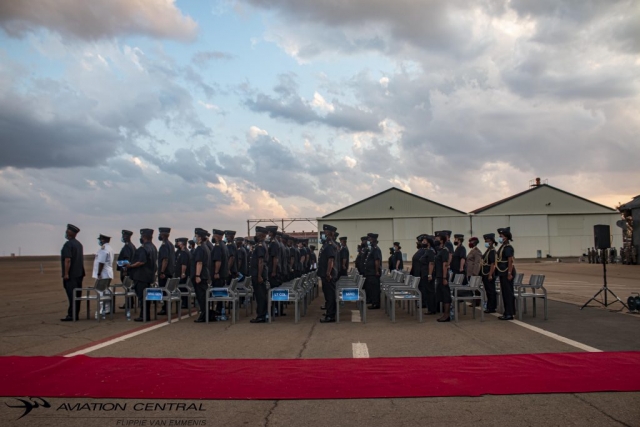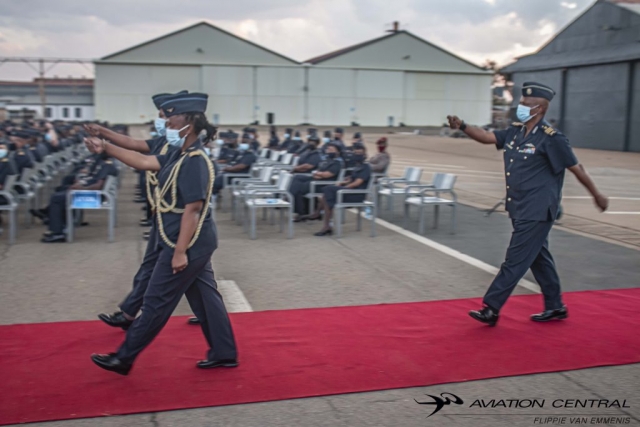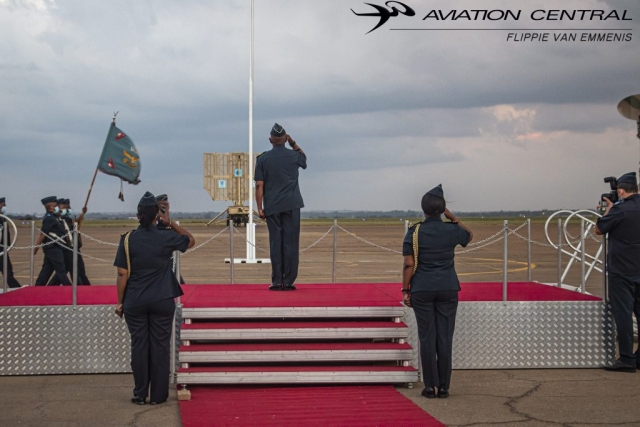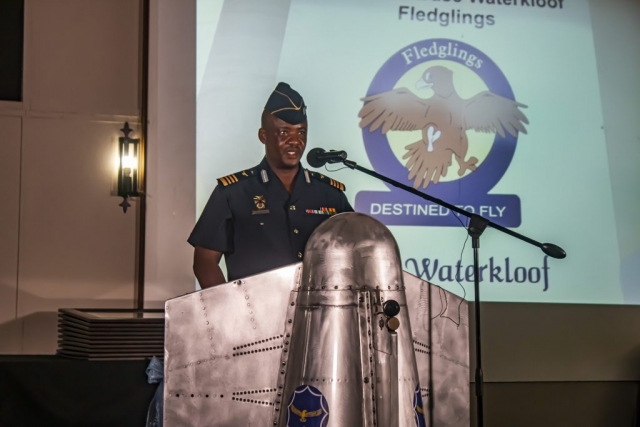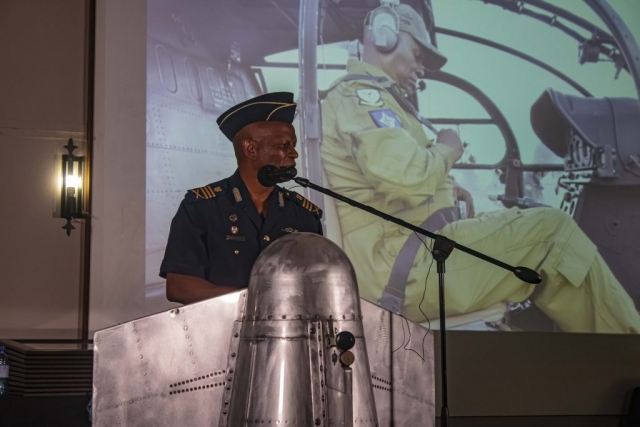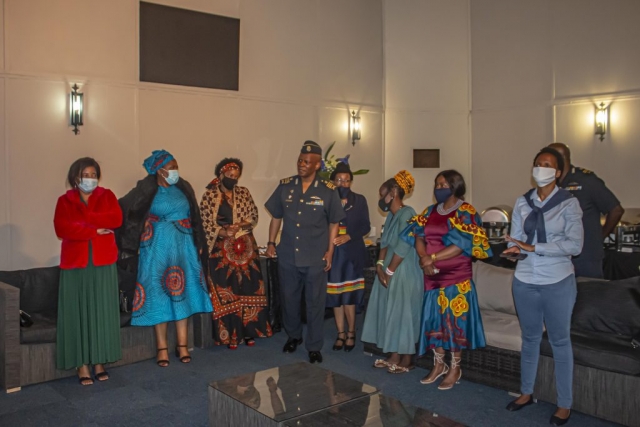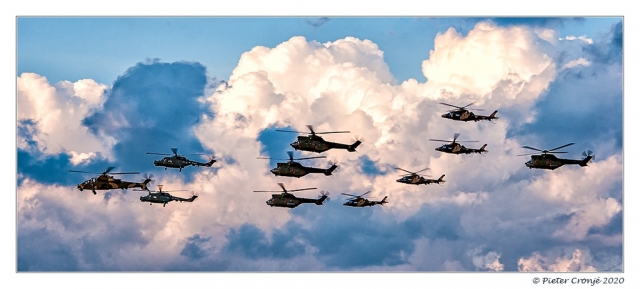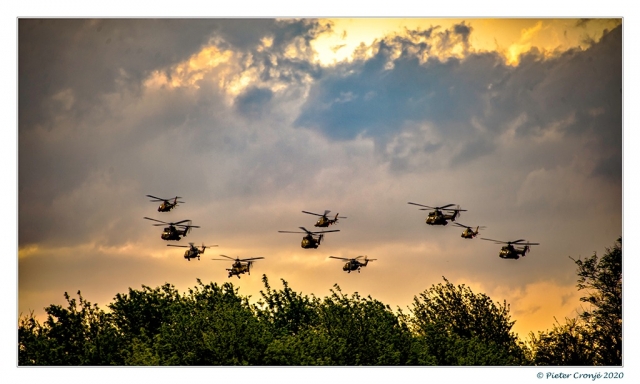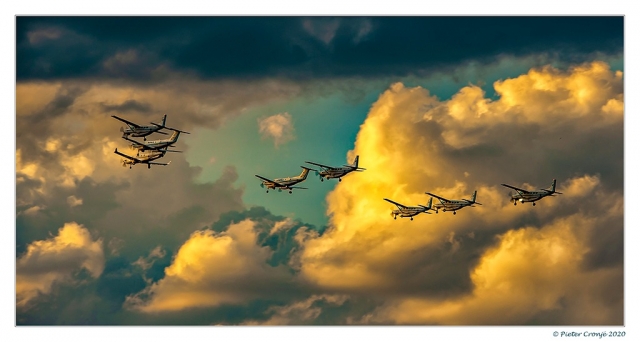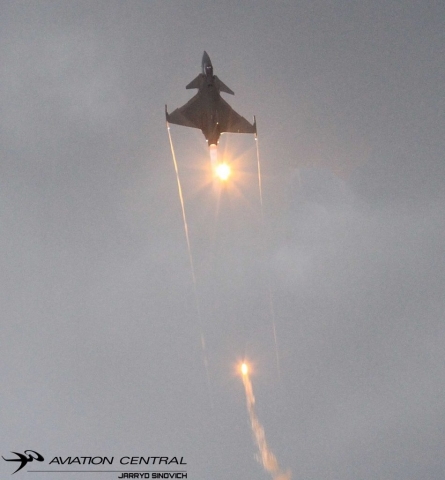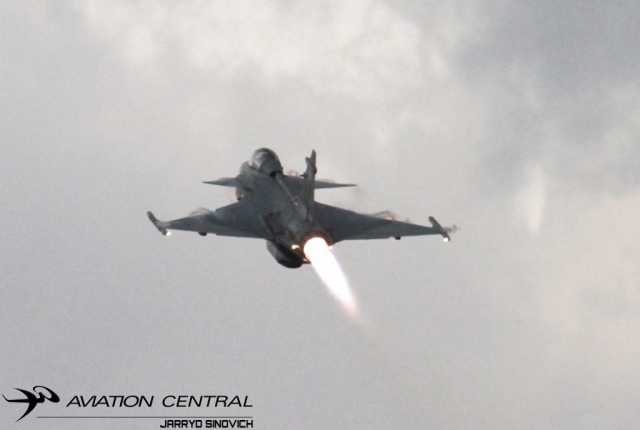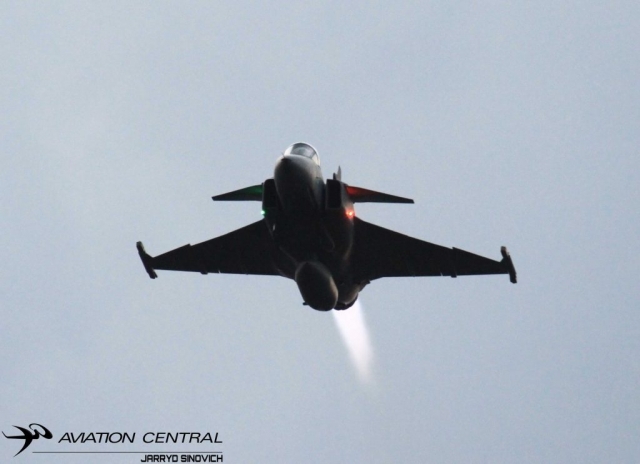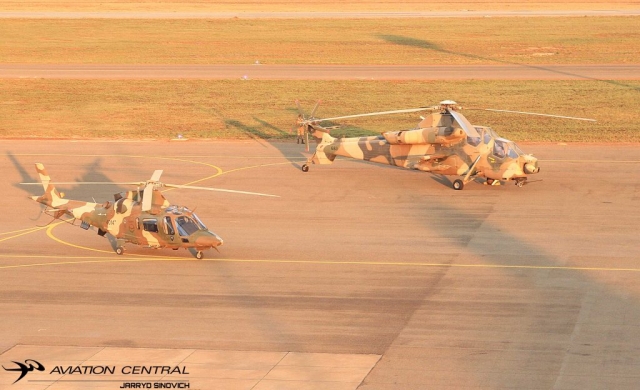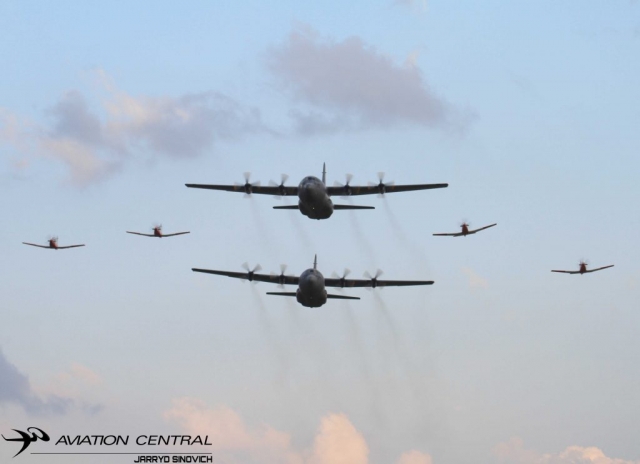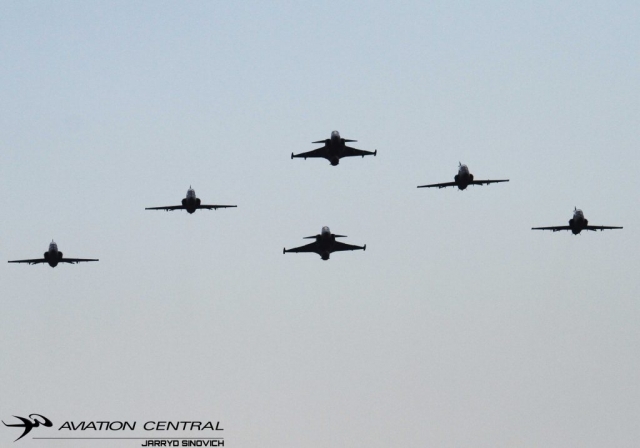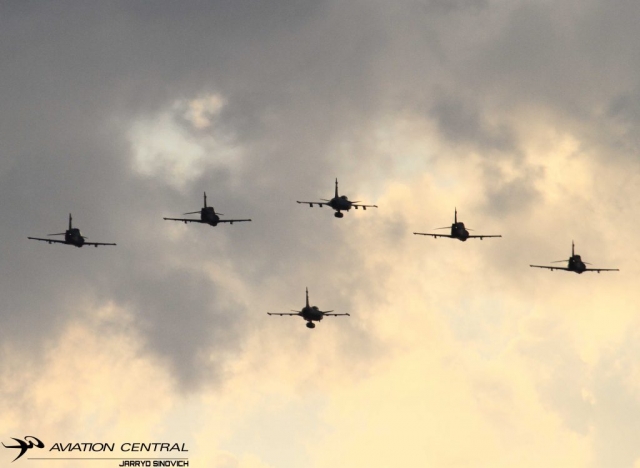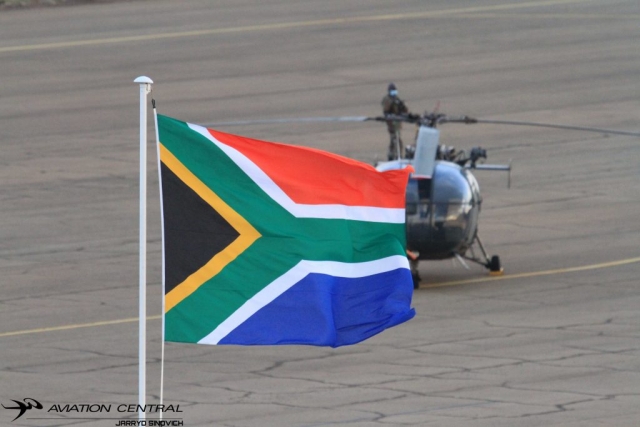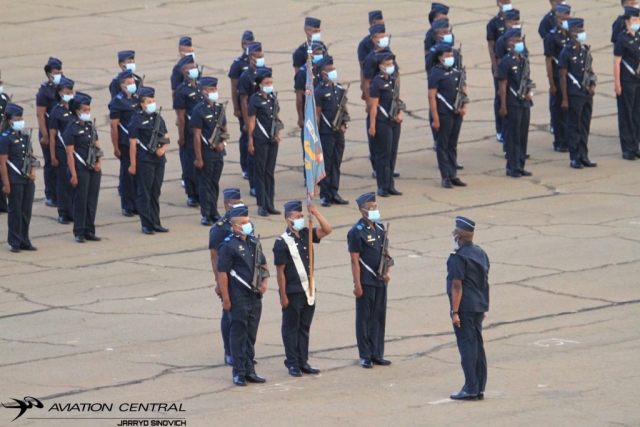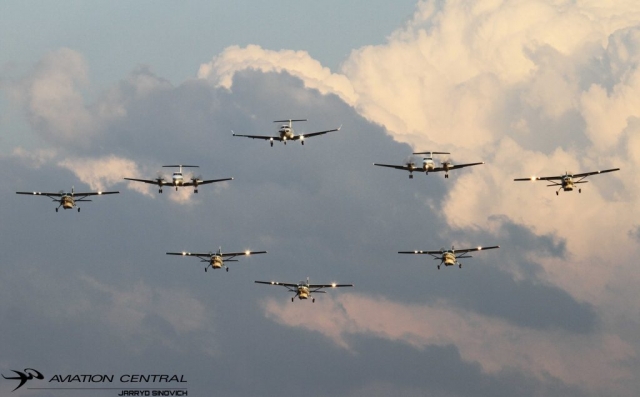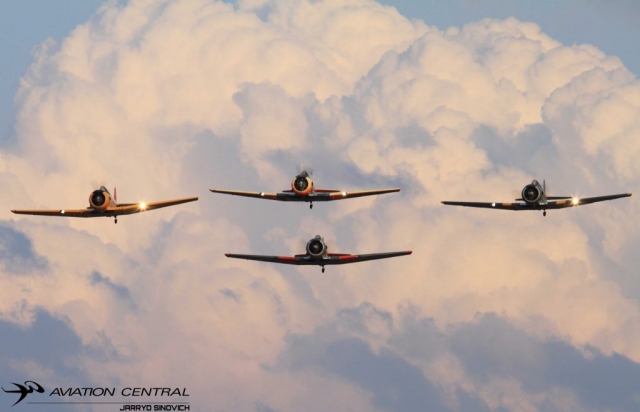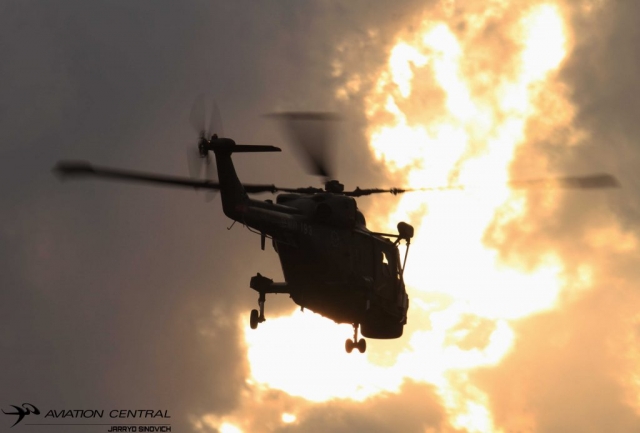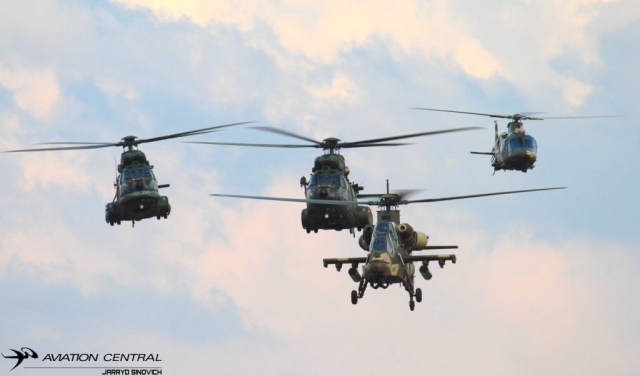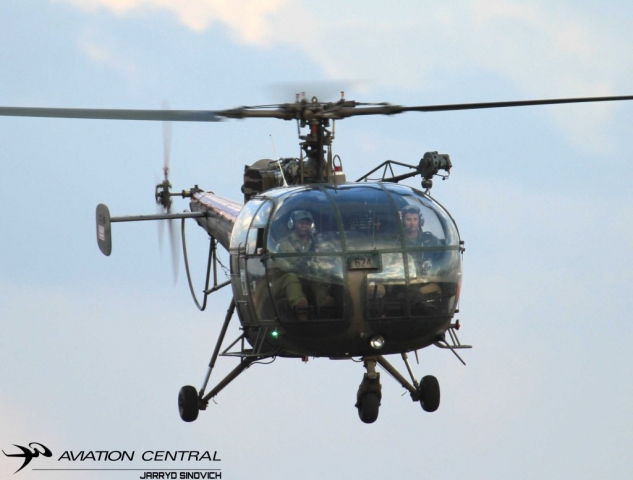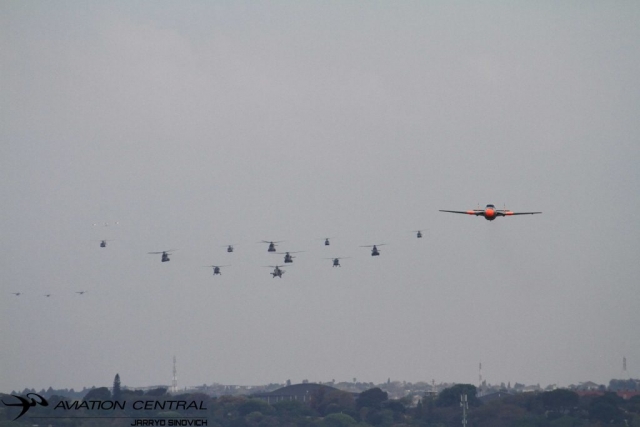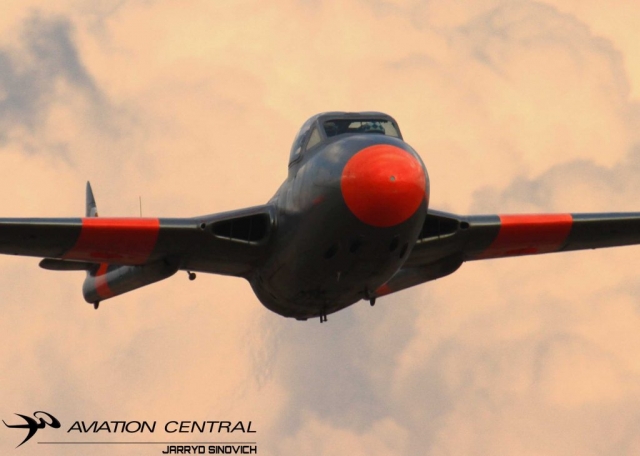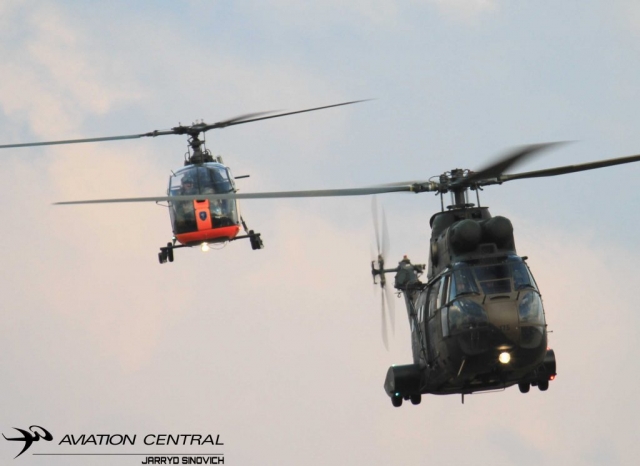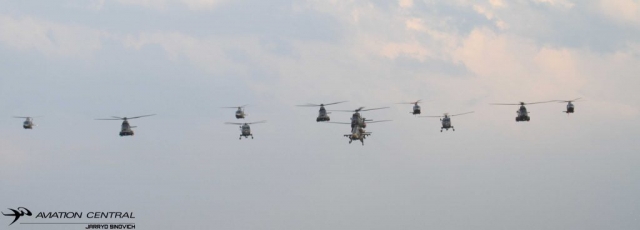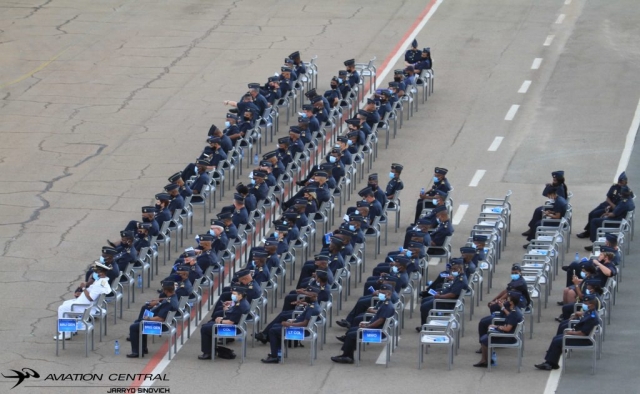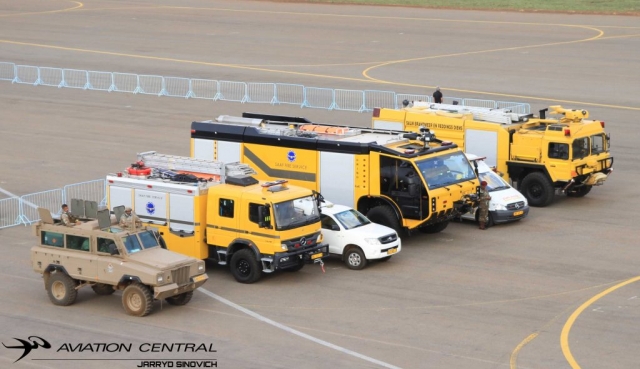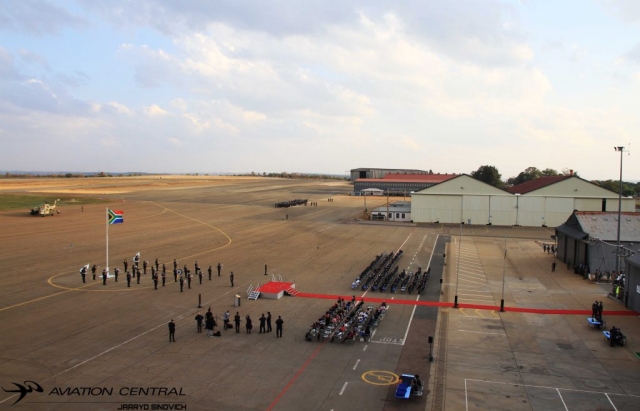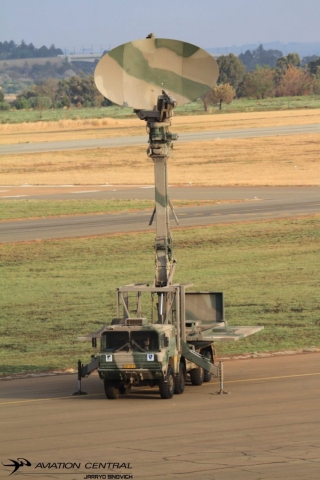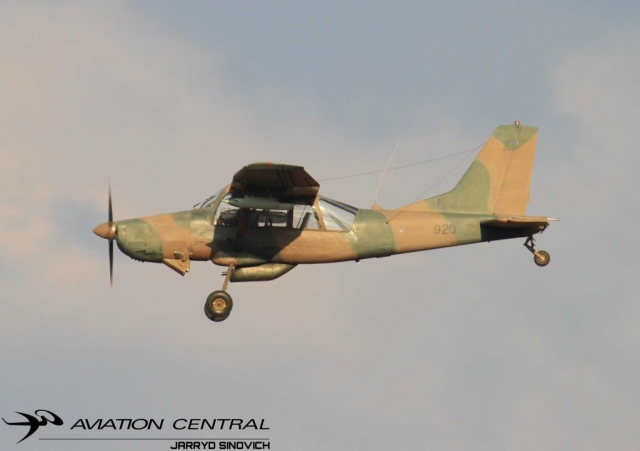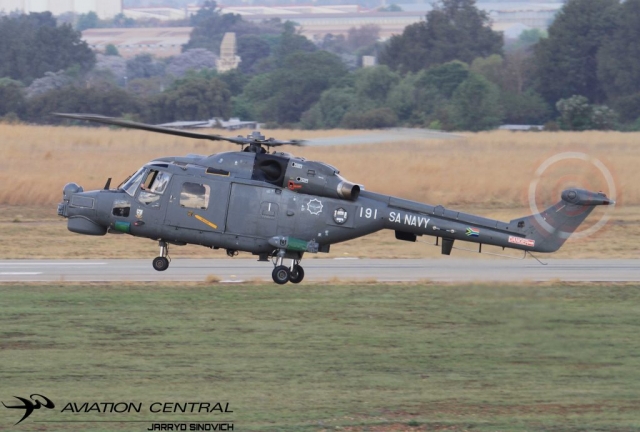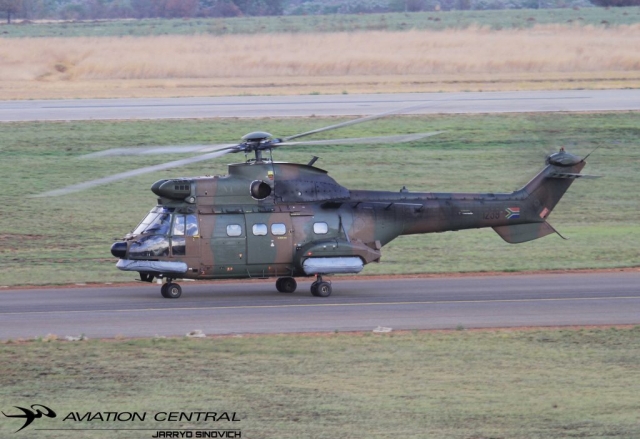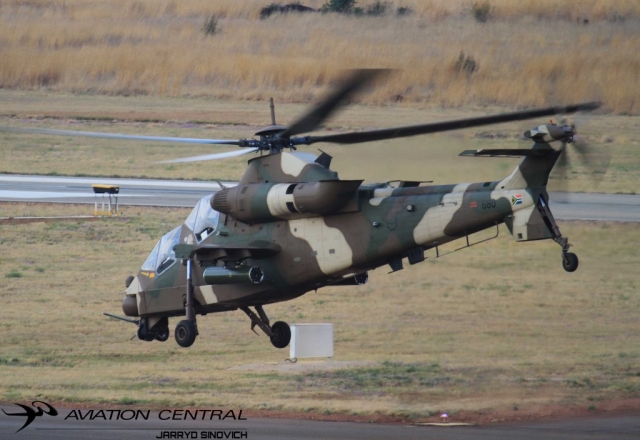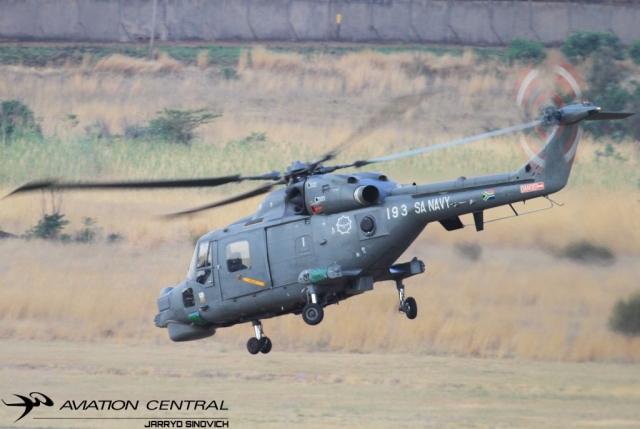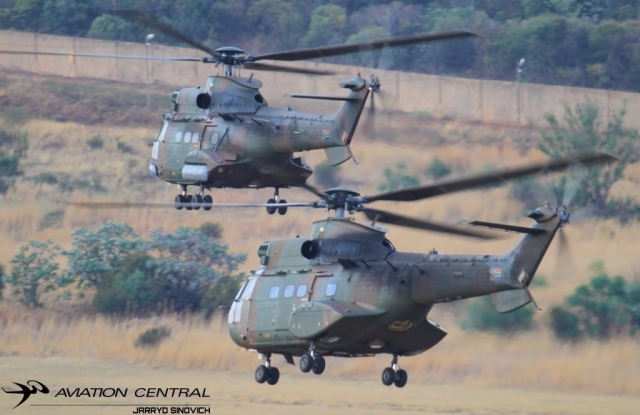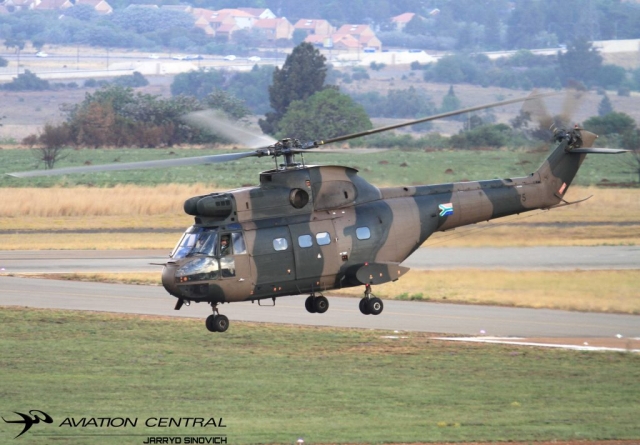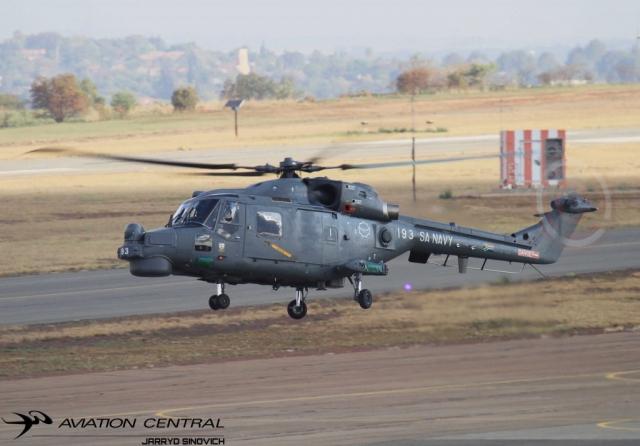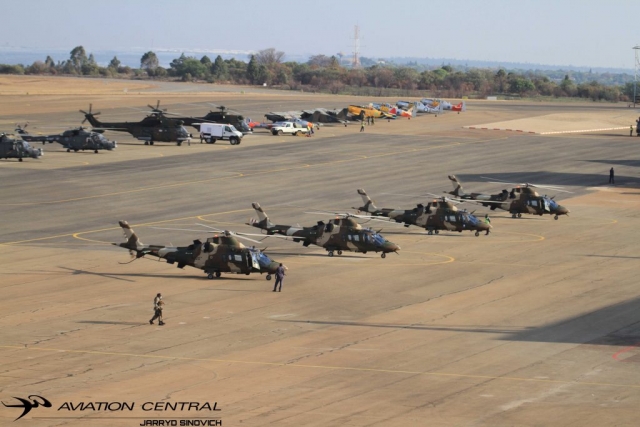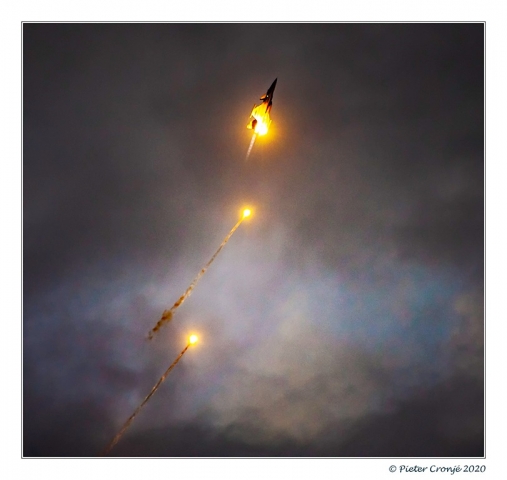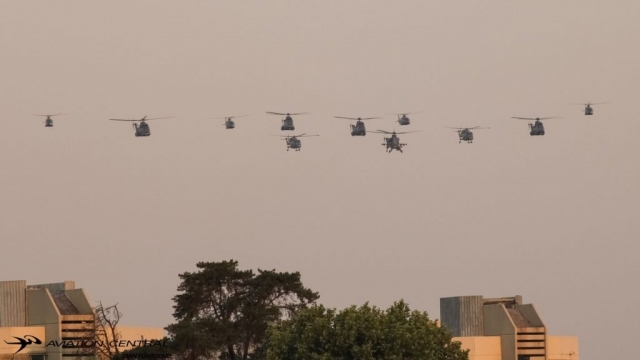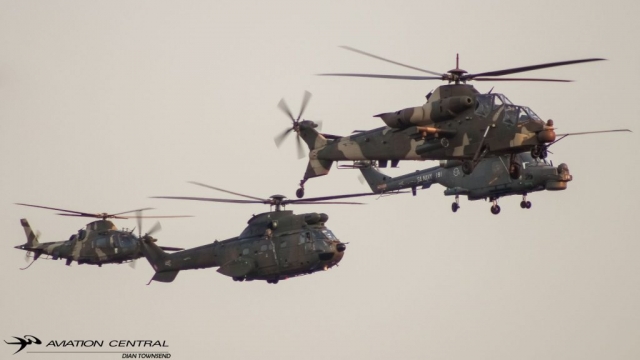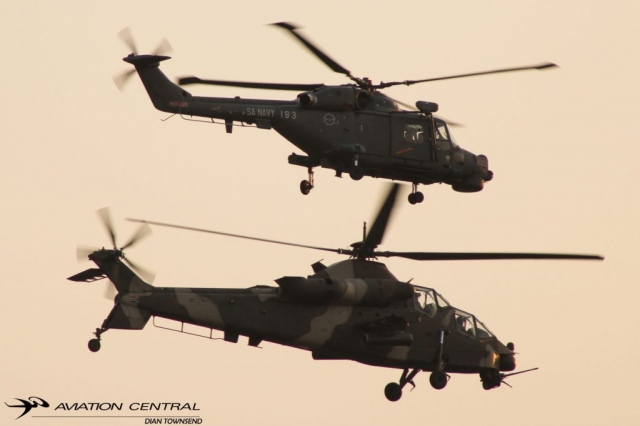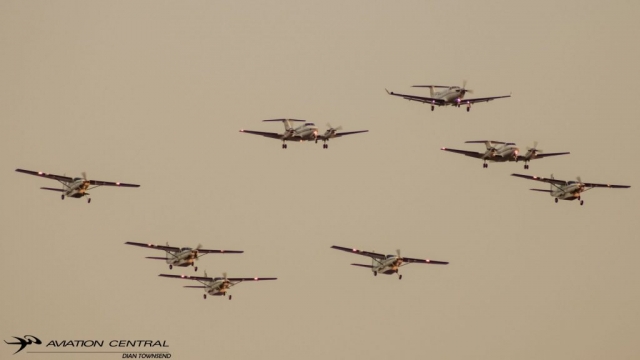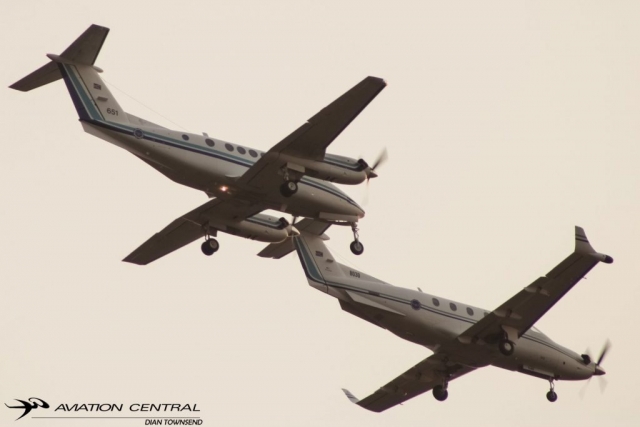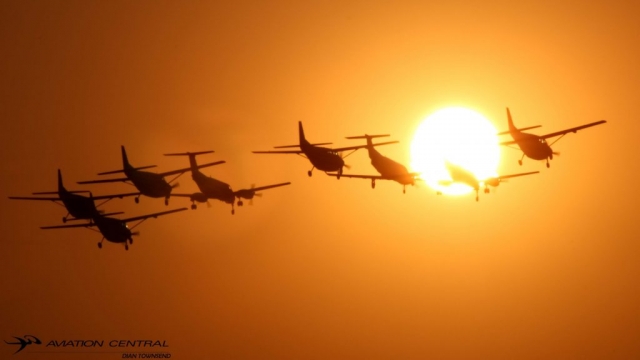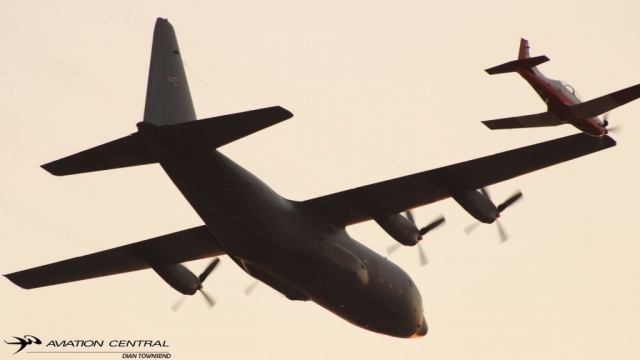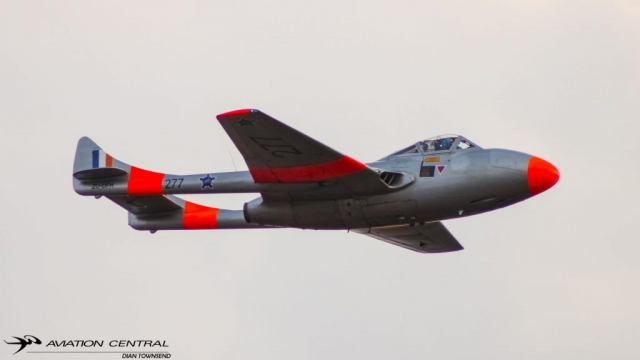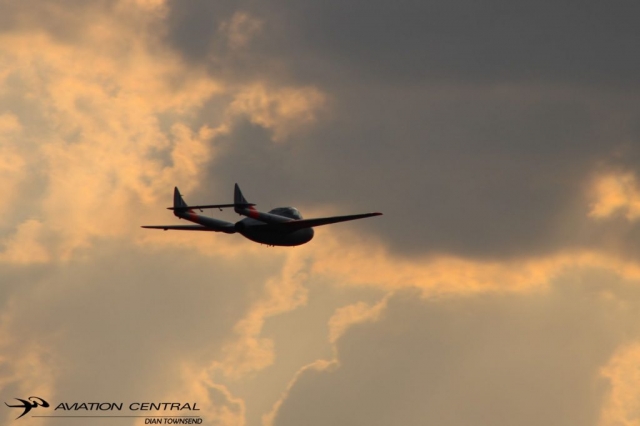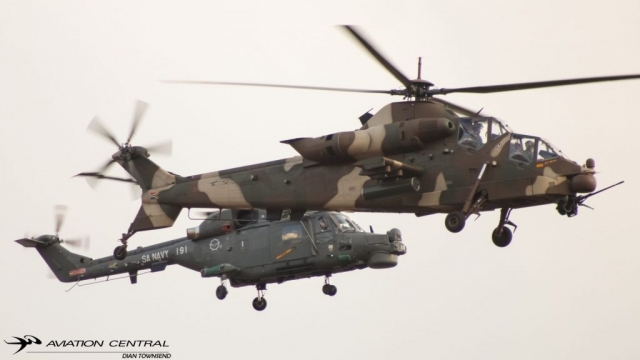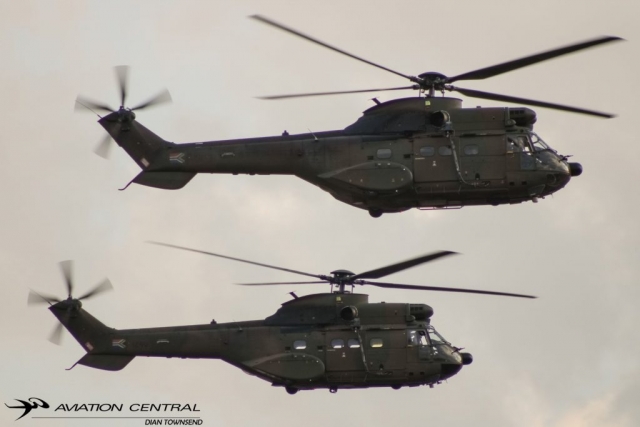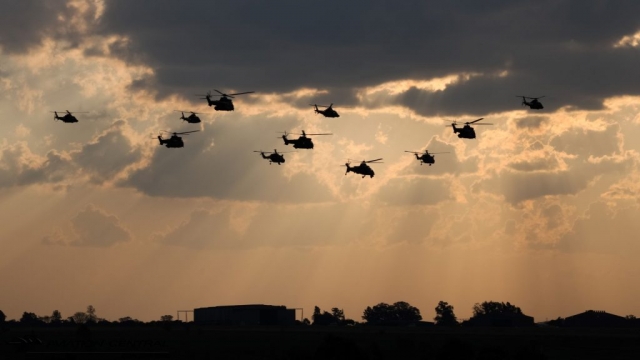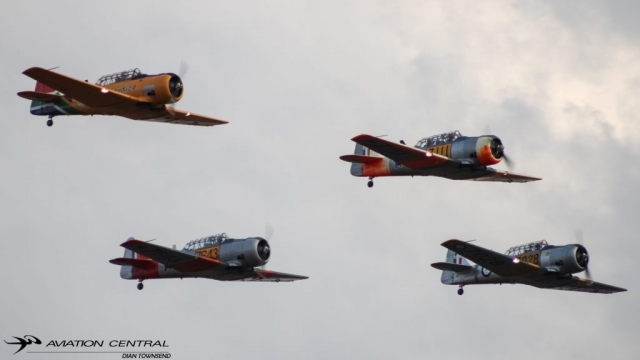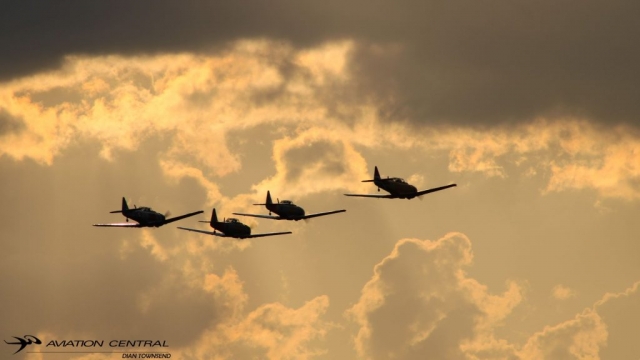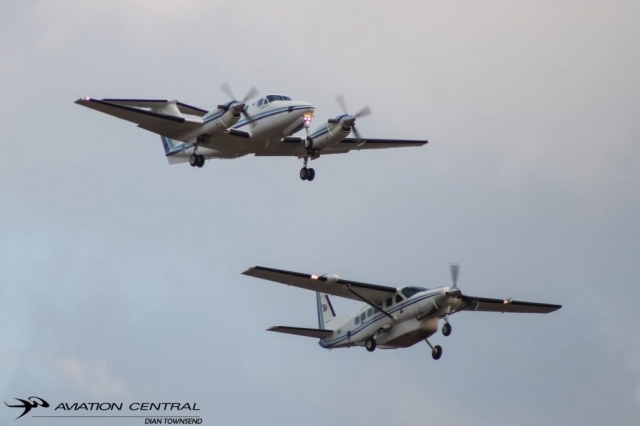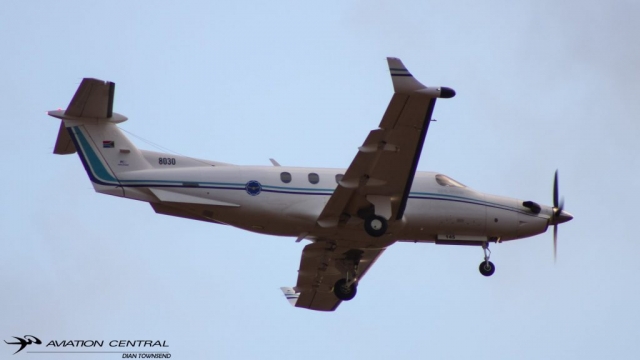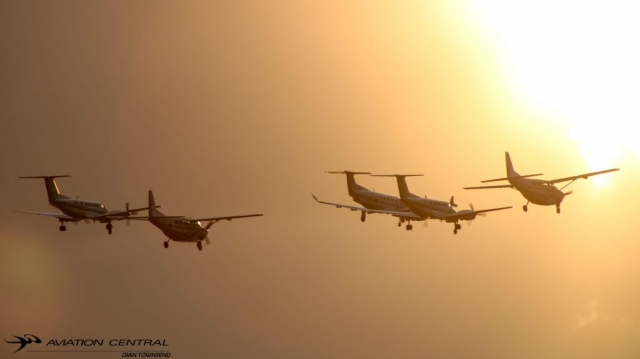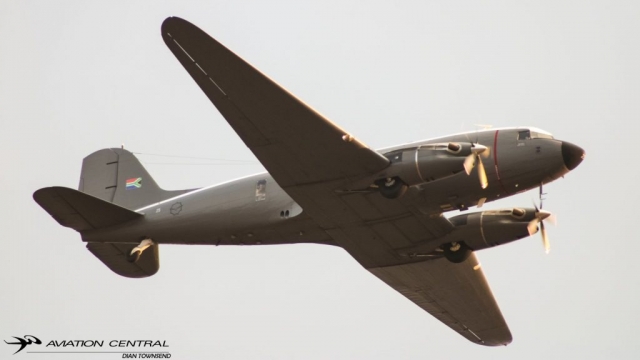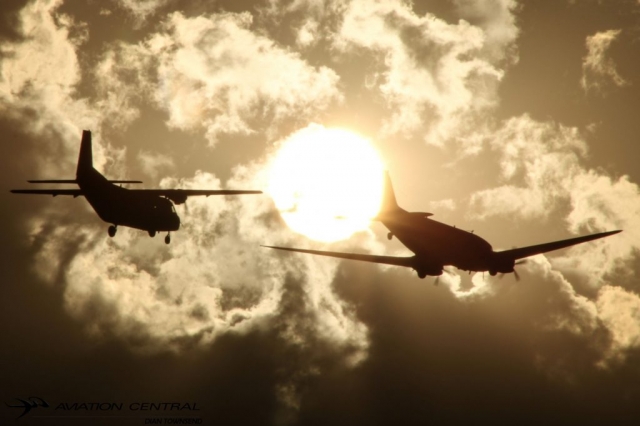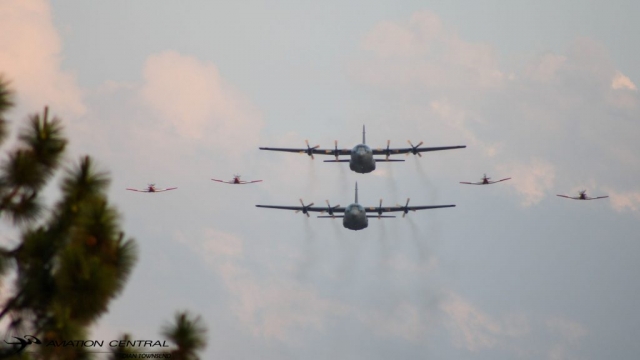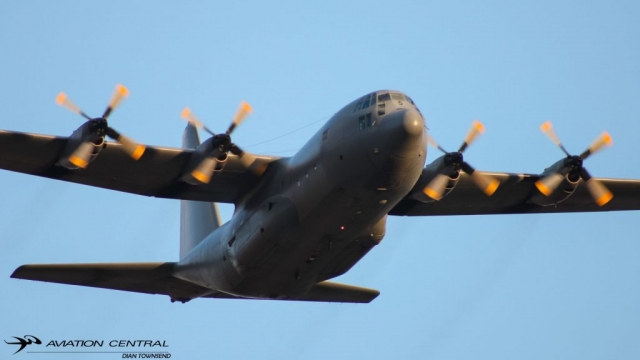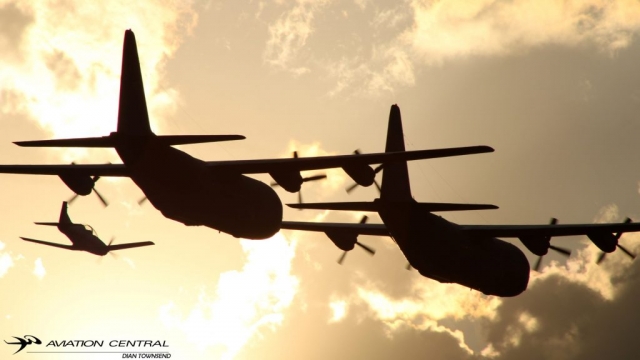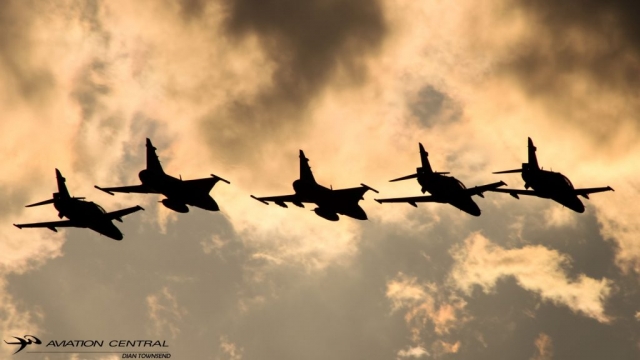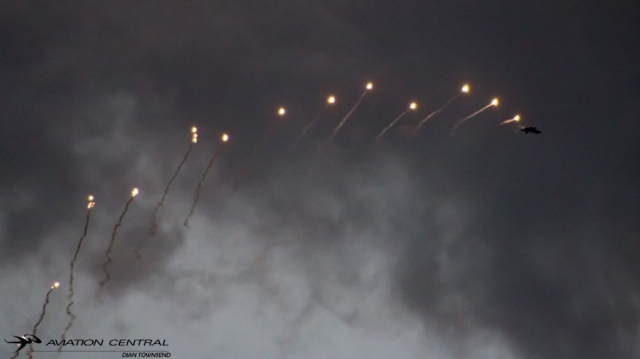Tag Archives: SAAviationNews
Cuban South African Airforce Graduates
by Lt Gen F.Z. Msimang, Chief of the South African Air Force
Life is indeed cyclical. Many years ago, in the mid-80’s a young soldier by the name Zakes Khulu along with his comrades found themselves in a foreign country pursuing aviation studies. They learned all they could in that country, immersing themselves in its culture, its ways of life. They would eventually return home with their newly acquired skills, eager to start collaborating in establishing a new democracy. Looking back at their journey in many ways mirrors your own. You too were deployed to a foreign country to learn, to grow, to improve and be immersed in a culture engendered with liberation so that when you returned, which you have now done, you will continue the democracy building project. That Zakes Khulu with some of those surviving comrades, stand before you now beaming with pride for your extraordinary achievements, watching you ride the waves of endless possibilities. We are extremely proud of you all.
We are here, today, under strict Covid-19 regulations, which we must observe and respect accordingly, to welcome all of you on parade and your proud families, loved ones and friends to this auspicious and memorable occasion. We are here to honour a group of military aviators who trained in the Republic of Cuba; we welcome them home to their esteemed SAAF flying community.
Graduates, you have touched my heart. You have carried yourselves with exceptional grace and honour. You kept your promise to me. You have brought home commendable results but know this road still unfolds before your feet. Baba Mandela – the Father of our Nation – once said: “After climbing a great hill, one only finds that there are many more hills to climb.”
This parade marks one of the many summits you will have to reach in your long careers in the SANDF.
But as your achievements belong to you they belong also to your unwavering support structures. It was a community project. This journey would have been impossible without the commitment and dedication of your instructors, your mentors and of cause – the support of your proud parents, family members and loved ones. A special word of thank you to all the SAAF members who helped you work through obstacles, while you tenaciously invited the universe to mold you into fine soldiers.
Our unbreakable bonds between the Cubas and our government can be traced to its support of African liberation movements, following the overthrow of the Cuban dictator Fulgencio Batista in 1959 by “The Movement,” formed by late longtime Cuban leader Fidel Castro. Cuba supported the anti-apartheid struggle in this country opposing racial segregation when it was not fashionable to do so. It criticised the international community for blatantly ignoring South Africa’s human rights’ violations – the very rights that many are taking for granted in this country today.
When the democratic South African National Defence Force entered into bilateral agreements with The Cuban Revolutionary Armed Forces to create study opportunities for our soldiers, the South African Air Force (SAAF) embraced this opportunity with open arms.
We identified disciplined young men and women to undergo training in Cuba, where they would be immersed in a different culture, social structure, and political landscape. In 2014, we sent twenty-seven candidates to undergo various training specialties in aviation engineering, air traffic control and pilot training fields. They stand before us now: a result of a bond based on shared revolutionary principles.
I kept an eagle eye on your developments in Cuba. I was pleased to learn that you turned every challenge into an opportunity for growth. Your results speak for themselves. You received golden awards for both academia and sports. You even experienced the devastating hurricane Irma and used that difficult time to learn major survival skills. Your stay in Cuba also coincided with the mourning of the passing of one the world’s finest revolutionaries Fidel Castro, his message of resistance to oppression resounding strong. Cuba provided you with immense lessons in patriotism, survival and determination. May these lessons nourish you.
Additional SAAF students commenced with their aviation training in Cuba in 2018 and 2019. We are expecting more graduates in 2021, 2022 amd 2026. Extending the SAAF training scope to various foreign countries will ultimately bring about a generation of differently trained individuals who if nurtured and allowed to plough back their knowledge, will enhance our outlook as part of the global community.
And as we reach our close, I must stress that the knowledge you have acquired is crucial in meeting our Constitutional mandate and requirements. Our constitution states that “the Defence Force must be structured and managed as a disciplined military force”. As a soldier, for me, the success of the SAAF will be underpinned by an enforcement of discipline and the concentration on functional, developmental and physical training. May we be soldiers who live in integrity: for ours is to serve with discipline, dignity, professionalism and patriotism. You have answered our Nation’sd call – Which is Service, and Country. May you grow to be airmen with integrity,…… for ours is to serve with discipline, dignity, professionalism and patriotism.
As proud and devoted members of the SANDF, we must have an eagle’s eye view on any challenge and hover above it menacingly, in the knowledge that our citizenry expects nothing less than a deep sense of security from us.
The Chief of the SAAF concluded his speech below:
TO THE MEMBERS ON PARADE, I WISH YOU ALL SUCCESS IN YOUR FUTURE ENDEAVOURS. YOU ARE OUR FUTURE LEADERS. GO OUT THERE AND SERVE THE NATION. THE AIR FORCE COMMAND COUNCIL WILL CERTAINLY BE FOLLOWING YOUR CAREERS WITH INTEREST – CONTINUE WITH THE HARD WORK AND DISCIPLINE YOU HAVE DEMONSTRATED THUS FAR.
MAY YOU BE ABUNDANTLY BLESSED.
I THANK YOU.
Aero L39s of the Cuban Airforce were used as ab-intio trainers for South African Air Force pupil pilots!
Future of AHRLAC secured as Business Rescue nears completion
This is in line with the business rescue plans adopted by affected parties in October 2019, pursuant to which Paramount Aerospace Industries acquired the businesses of ADC and its subsidiaries in terms of the relevant business rescue plans, which included the sale of the businesses and assets of ADC and its subsidiaries, as well as the assumption of certain liabilities of these entities in accordance with the respective business rescue plan.
As the Business Rescue Plans have now been adopted, the newly formed Paramount Aerospace Industries will bring new management with a wealth of aerospace engineering and aviation industry experience to the programme. The state-of-the-art factory at Wonderboom Airport has been operational for several months under Paramount’s stewardship, with manufacturing being ramped up to ensure the timeous delivery of aircraft to customers around the world. Approximately 85% of the original staff of ADC have been retained.

Paramount has provided and facilitated significant capital as part of these business rescue processes in the form of both post commencement funding, working capital, capital investment and the assumption of liabilities and loan repayments, in accordance with the provisions of the respective plans. Further capital will be injected into the business over the coming months to support both marketing initiatives and manufacturing.

Alison Crooks, CEO of Paramount Industrial Holdings stated: “This is great news for the future of the aircraft, for Paramount, for the South African Aerospace industry, as well as for the global aircraft market. Paramount’s decision, more than a decade ago, to fund the development of the AHRLAC aircraft was a matter of national pride and came at a time when the local aerospace industry was searching for a project that would invigorate the sector. Our passion for the country and for innovation is reflected in the direct investment of almost R1 Billion into the project. We are grateful that this strategic programme is now secured and that we can focus on a brighter future. We are delighted to have retained most of the employees who worked on the AHRLAC programme for years and to have created employment for many capable people through our efforts.”
The aircraft addresses a key global security requirement by performing missions that previously required several different aircraft. It integrates designs from helicopters, surveillance platforms and reconnaissance aircraft, with the ability to carry multiple systems, such as surveillance radar and electronic systems.

Crooks added: “We are very excited about our new management team, made up of leading experts in aircraft engineering, industrialisation and production, who are focusing on the manufacturing of the aircraft and its delivery to customers. We have been encouraged by the global interest in the aircraft and we look forward to making further new customer announcements in the near future. We would like to thank all of our employees who have stood by us and have demonstrated that the resilience, innovative spirit and can-do mentality of South Africans is as strong as ever.”
The aircraft is a smart, innovative ‘command centre in the sky’ that integrates some of the world’s most advanced Multi-Function-Displays, Electro Optical Systems, Electronic Intelligence gathering and compact sensors available in the world today. AHRLAC is purpose-built to be infinitely reconfigurable. This allows the application of the aircraft in multiple roles and missions in response to diverse customer requirements around the world.

The AHRLAC aircraft will be manufactured in South Africa at the state-of-the-art factory on the Paramount Aerospace Campus in Wonderboom, north of Pretoria. This facility is a vertically integrated operation that uses latest-generation machines to fabricate all airframe components and sub-systems directly from a digital model. All fabricated components are brought together with the engine and avioinics on the final assembly line which produces an aircraft ready for flight.
In keeping with Paramount Group’s well-established portable production model, the aircraft could, depending on customer requirements, also be exported in kit format for final assembly in customer countries.
Paramount restated its committed to continue its investment in South Africa, in order to build a strong, sustainable aircraft and aerospace systems capability in the country, and this transaction supports this objective.
U.S. donates COVID-19 protective gear to South African Health Services
The U.S. government and U.S. Africa Command (AFRICOM) delivered approximately $340,000 in personal protective equipment to the South African National Department of Health (NDoH), August 15.


The equipment, delivered by a U.S. Air Force C-130J, is bound for Gauteng, Western Cape, Eastern Cape, and KwaZulu Natal, where it will benefit front-line health workers.

AFRICOM purchased the supplies, which include N-95 masks, gloves, gowns and sanitizer, using Overseas Humanitarian, Disaster, and Civic Aid Appropriation (OHDACA) funds after the South African government made a formal request for assistance to the U.S. Embassy.

The command also is supporting the set-up of handwashing stations in Gauteng, Eastern Cape, and KwaZulu Natal, contributing $225,000 to this initiative. This brings the total value of U.S. support toward South Africa’s COVID-19 response to more than $46 million.


“U.S. Africa Command is focused on mission and the fight against COVID-19. We’ve been working in close coordination with the Department of State and United States Agency for International Development (USAID) to provide assistance where we can to the international COVID-19 response,” Lt. Gen. Kirk Smith, deputy commander, U.S. Africa Command.

“The contributions of critical personal protective equipment and supplies help South Africa and reflect our commitment to partnership in Africa,” he said.
The U.S. has had a long-standing relationship with South Africa. This relationship includes a commitment to improving security and military cooperation to advance peace and security in the region.

On the occasion of the C-130’s arrival, U.S. Ambassador to South Africa Lana Marks said, “We are so proud of our growing partnership with South Africa’s National Defense Forces and our cooperation to ensure peace in the region. This delivery of lifesaving equipment, critically needed here in South Africa, shows how we can leverage the infrastructure of our strong defense cooperation to further bolster the U.S. support to South Africa’s ongoing COVID-19 response.”

Earlier this summer, AFRICOM Foreign Humanitarian Assistance funds provided 11,064 face shields earmarked for the South African Military Health Service and two additional projects provided surgical face masks and protective face shields to assist the South African Government.
The first 15 does it again!
At 14h43, Friday, 14 August, the SA Air Force (SAAF) 15 Squadron, NSRI Durban rescue swimmers and Netcare 911 rescue paramedics were activated to prepare to patient evacuate a 36 year old Indian crewman, suffering a serious injury, off a 330 meter crude oil tanker near to Port Elizabeth. A SAAF 15 Squadron Oryx helicopter, accompanied by two NSRI Durban rescue swimmers and 2 Netcare 911 rescue paramedics, departed Durban Air Force Base and arrangements were made for refuelling to take place at East London and at Port Elizabeth.




After refuelling was completed in East London, on arrival at the ship, off-shore of Algoa Bay, 2 NSRI rescue swimmers and a Netcare 911 rescue paramedic were hoisted onto the vessel accompanied by a rescue stretcher. The patient, in a serious condition, suffering a compound fracture to a leg, reportedly sustained in a fall, was taken into their care from the ships medical crew.

The patient was airlifted to a Port Elizabeth hospital in a stable but serious condition where he is recovering post operation. The SAAF Oryx helicopter refuelled at Port Elizabeth 15 Squadron, Charlie Flight and on the return route to Durban refueling took place at East London. The operation completed at 02h39 on Saturday morning.

15 Squadron is one of the coastal helicopter squadrons based at Air Force Base Durban. It is currently a transport/utility helicopter squadron, utilizing the Oryx and A109LUH Helicopters.Their sister based Squadron “Charlie” Flight at Air force Station Port Elizabeth flying the BK117.
Another Rescue for 15 Squadron and the Mountain Club of SA
The Kwa-Zulu Natal (KZN) section rescue team was called out on this past Saturday morning to a woman who had sustained a broken leg in the southern Drakensberg. She was stretchered out to a private ambulance by the Underberg MCSA rescue team.

Then near mid night on Sunday the South African National Defence Force requested help with a soldier who had sustained serious injuries in a fall in Leslie’s Pass in the Injasuthi area. At first light on Monday an Oryx helicopter from 15 Squadron , AFB Durban was dispatched, which then picked up 3 Mountain Club members at Pietermaritzburg. A rescue then took place high in Leslie’s Pass, before bringing the patient to a hospital in Pietermaritzburg.

Thanks to Gavin Raubenheimer for the story!
KZN Search & Rescue Convener

15 Squadron is one of the helicopter squadrons based at the still Air force Base Durban. It is currently a transport/utility helicopter Squadron flying the Oryx medium transport helicopter as well as the Agusta A109LUH . 15 Squadron “Charlie” flight is based at Air force Station Port Elizabeth flying the BK117 helicopter.
At Cruising Altitude in 2019 and Prepared for Turbulence in the Future-Pilatus
Pilatus reported another very successful business year in 2019, exceeding the one billion mark yet again with turnover of approximately 1.1 billion Swiss francs. Operating income totalled 153 million Swiss francs, incoming orders amounted to 1.1 billion Swiss francs. Pilatus staff enjoyed a share in this success with a generous bonus payout – even in the current difficult economic climate.
2019 will go down in the company’s 80 year history as another very successful twelve months overall. The figures were very similar to those reported in 2018. Total aircraft deliveries came in at 134 – 83 PC-12 NGs, 40 PC-24s and 11 PC-21s – the most extensive production programme yet.
Successful PC-24 market launch
The market rollout of the brand-new PC-24 is now complete and Pilatus has well and truly left the build-up phase. 75 PC-24s have been delivered to date and are in use on every continent. The PC-24 with the most hours in the air has already flown over 1,800 hours. The order book re-opened in May last year and demand for the world’s unique Pilatus Super Versatile Jet remains as high as ever. The PC-24 has won prestigious new clients such as Volkswagen and KSA, the Swedish air ambulance service – important milestones in a programme which is still young as yet.

A comprehensive post-certification test campaign was performed in 2019 to have the Super Versatile Jet approved for operations on rough field runways and in other conditions. All PC-24s are now authorised for use on wet and snow-covered unpaved and grass runways. In the same vein, other PC-24 product improvements have been made to eliminate initial teething problems and provide customers with extra added benefits.
Excellent response to the PC-12 NGX
Pilatus launched the PC-12 NGX in autumn 2019: compared to its predecessor, this further development of the world’s best-selling single-engine turboprop in class now boasts an improved engine, smarter avionics and a completely re-designed cabin with larger windows. The new PT6E-67XP engine by Pratt & Whitney Canada is particularly impressive: its electronic propeller and engine control system is a worldwide first in this market segment. After obtaining certification in 2019 and making appropriate changes to the production line, the market launch generated a large number of orders. This month saw the first customers take to the skies aboard their new NGXs.

Major PC-21 order from Spain
Finalised in 2019 and signed in January 2020, the PC-21 order from Spain is a very important step in securing future operations. From 2021 onwards, Pilatus will deliver a total of 24 PC-21s to the Spanish Air Force, the Ejército del Aire. Spain is the third European air force to opt for this Next Generation Trainer. If the General Aviation Division is indeed heavily impacted by the current economic difficulties, this order will prove essential for Pilatus in terms of providing sufficient activity for the workforce and continued business success for the company. It also demonstrates the importance of the two-pillar strategy – civilian and military business – in guaranteeing future economic viability.

Pilatus delivered the last of a total of 49 PC-21s to the Royal Australian Air Force in November 2019. This delivery – the final one for the time being – brings the worldwide fleet of PC-21s up to a total of 211 aircraft. An impressive figure indeed, and proof that the PC-21 is now the world’s most modern, most efficient training system.
Employee profit-sharing – nothing changes
At 2,289 the number of full-time jobs across the Pilatus Group increased slightly in 2019. The very good figures for the year deliver the most effective means of thanking Pilatus employees: from apprentice through to senior manager, all employees received their personal share in the profits for 2019 as usual. This year’s bonus, paid in April 2020, is equivalent to almost 1.5 times the respective monthly salary. This performance-related employee profit-sharing model is contractually agreed with the company’s own Workforce Committee and has been in place for over 25 years.
Turbulent times in 2020
Pilatus started the year with orders worth over two billion Swiss francs, not including the major order from the Spanish air force. But the corona crisis is bound to leave its mark, and the promising outlook of the early weeks of the year has had to be revised downward. Pilatus was quick to take appropriate countermeasures, including the introduction of short-time work for large numbers of staff. In the meantime, fewer than 20 percent of employees are still affected by this measure. Supply chains remain disrupted, necessitating continuous reassessment of the situation.
Oscar J. Schwenk on 2019 and the future
Oscar J. Schwenk, Chairman of Pilatus, commented on the annual results as follows: “I am very pleased with our performance in 2019. I note, however, that the corona pandemic has pitched us – and many others – into a period of severe turbulence requiring constant fact-based readjustment of our chosen heading. Every pilot learns how to make the all-important corrections to flight path and altitude. We are doing exactly, reverting to the basics, as taught from the first hours of flight instruction – encompassed in the term good airmanship: aviate, navigate, communicate. In other words, retain control of the business, apply an analytical approach to problems and, finally, define a fact-based plan of action and communication.
Under the leadership of CEO Markus Bucher, I have always tailored my management style to economising during the good times in preparation for the challenges of the future, all the time keeping our feet firmly on the ground – all entrepreneurs know that healthy liquidity comes before everything else! Specifically, that means paying realistic salaries, monitoring fixed costs at all times and distributing profits with prudence. Happily, our investors have supported this sustainable corporate strategy – one which we have deliberately kept free of external loans – for years.
We are not the only ones having to tighten our belts. In a situation which no one could have foreseen, it is reassuring to know that the financial reserves set aside in the past will ensure we are able to navigate the current crisis in preparation for a clean landing and a renewed take-off into the future, together. In the final instance, our business success benefits everyone!”
Leidos, Paramount USA, and Vertex Aerospace team up to pursue U.S. Special Operations Command Armed Overwatch prototype program
(Reston, Va.) May 4, 2020 – Leidos (NYSE:LDOS), a FORTUNE® 500 science and technology leader, today announced a teaming agreement with Paramount Group USA and Vertex Aerospace to pursue a new contract to deliver the Bronco II, a new purpose-built, multi-mission aircraft. The aircraft will support the U.S. Special Operations Command’s Armed Overwatch program.
This strategic relationship, with Leidos as the prime contractor and Paramount and Vertex as primary teammates, will combine decades of experience integrating, manufacturing, and delivering cutting-edge airborne solutions to the warfighter.

The Bronco II is a rugged, affordable, and sustainable multi-mission aircraft that will be manufactured in Crestview, Fla. The Leidos offering is built to meet the specific needs of U.S. Special Operations Command.
“Leidos has a long history as a premier provider of airborne solutions,” said Gerry Fasano, Leidos Defense Group president. “The Bronco II demonstrates our commitment to providing the best-of-breed in technology, as well as our agility in meeting the needs of our country’s national security missions. This offering will leverage each company’s expertise to deliver cost-effective innovations for the warfighter.”
“Our collaboration with Vertex and Leidos will present best of capabilities for what will undoubtedly be a critical program to enable U.S Air Force Special Operations Command to deal effectively with the challenges and rigors of modern day asymmetrical warfare,” said Steve Griessel, CEO of Paramount Group USA. “The Bronco II was designed specifically for asymmetrical warfare and will operate at a fraction of the procurement and lifecycle costs of an aircraft with similar mission applications and capabilities.”

“We are proud to team with Leidos and Paramount, as we share a commitment to deliver affordable state-of-the-art capabilities to combat the challenges posed by modern, multi-domain operations,” said Ed Boyington, Vertex Aerospace CEO and President. “With a long track record of delivering excellence to our customers, we look forward to producing and supporting the purpose-built Bronco II aircraft and weapons system as a transformational tool for our warfighters.”

Visit www.bronco-usa.com
About Paramount Group USA
Headquartered in Dallas-Ft. Worth, Paramount Group US Inc. is the U.S. entity of the Paramount Group, the global aerospace and technology company, providing fully integrated and turn-key air, maritime, and land solutions. Paramount Group USA is also the parent company of Paramount Aerospace Systems USA, its wholly-owned US subsidiary. Since its inception in 1994, Paramount Group has built strong relationships with governments in more than 30 countries around the world. It is a leading innovator in the design and development of state-of-the-art technologies that it manufactures in locations globally. Please visit paramountgroup.com/usa or follow us on Twitter.
About Vertex
Vertex Aerospace offers a global capability and complete solution for aftermarket aerospace services for government and commercial customers. The Company’s international presence and vast range of services has distinguished itself from competitors for over 45 years. The Mississippi-based company operates in over 100 locations worldwide and is proud to have a 50 percent veteran employee rate. Information about Vertex can be found at vtxaero.com.
About Leidos
Leidos is a Fortune 500® information technology, engineering, and science solutions and services leader working to solve the world’s toughest challenges in the defense, intelligence, homeland security, civil, and health markets. The company’s 36,000 employees support vital missions for government and commercial customers. Headquartered in Reston, Va., Leidos reported annual revenues of approximately $11.09 billion for the fiscal year ended January 3, 2020. For more information, visit leidos.com.
Statements in this announcement, other than historical data and information, constitute forward-looking statements that involve risks and uncertainties. A number of factors could cause our actual results, performance, achievements, or industry results to be very different from the results, performance, or achievements expressed or implied by such forward-looking statements. Some of these factors include, but are not limited to, the risk factors set forth in the company’s Annual Report on Form 10-K for the period ended January 3, 2020, and other such filings that Leidos makes with the SEC from time to time. Due to such uncertainties and risks, readers are cautioned not to place undue reliance on such forward-looking statements, which speak only as of the date hereof.































